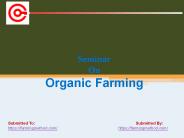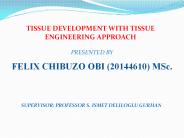Synthetic Fertilizers Advantages And Disadvantages PowerPoint PPT Presentations
All Time
Recommended
A Natural pesticide is a substance that disrupts or kills organisms that we consider to be pests such as weeds, damaging insects, or microbes that cause disease. Pesticides that are made by other organisms, usually for their own defense or that comes from a natural source like a mineral or a plant are called natural pesticides. Although this is generally true, not all natural pesticides are always safer or better for the environment than man-made pesticides. Nicotine, for instance, is the highly addictive component of cigarette smoke and a natural pesticide found in tobacco leaves, but it is actually much more toxic than the majority of modern synthetic pesticides.
| PowerPoint PPT presentation | free to download
In this report, the global Synthetic Fertilizers market is valued at USD XX million in 2016 and is expected to reach USD XX million by the end of 2022, growing at a CAGR of XX% between 2016 and 2022.
| PowerPoint PPT presentation | free to download
Organic and inorganic fertilizers are important for plants to increase fertility as well as improve soil health and condition. However, each fertilizer material has its advantages and disadvantages.
| PowerPoint PPT presentation | free to download
All fertilizers are labeled with three numbers giving the ... All other ingredients are considered and called filler. COMPLETE VERSUS INCOMPLETE FERTILIZERS ...
| PowerPoint PPT presentation | free to view
Natural fertilizers derived from animals and plants are known as organic fertilizers. Carbonic compounds, which are necessary for plant growth, are added to the soil as a result. Organic fertilizers alter the physical and chemical properties of the soil, encourage microorganism reproduction, and raise the amount of organic matter in the soil. It is viewed as one of the primary supplements for green food. These pesticides can be induced genetically in plants through genetic engineering or can be found naturally in microorganisms. Soil contamination and pollution from a variety of chemicals, like fluoroacetamide, can be avoided by using Biopesticides. Additionally, they are less likely to irritate animal and human skin. Nutrients are essential to the growth and other metabolic processes of every living thing
| PowerPoint PPT presentation | free to download
Large Scale Production of Synthetic Fuels
| PowerPoint PPT presentation | free to view
Year 2020 organic farming methods. Learn how to start.... What is Organic Farming? Need Key characteristics Four Principle Advantages Disadvantages
| PowerPoint PPT presentation | free to download
Fiber 8/16 raw materials, either natural or synthetic that produce yarns and fabrics No perfect fiber that will adequately serve every general design purpose exists.
| PowerPoint PPT presentation | free to view
Cation exchange capacity increased. Disadvantages. Low concentration of nutrients. ... Small amount of fertilizer needed per nutrient provided. Easy to handle. ...
| PowerPoint PPT presentation | free to view
Chapter 17 Energy Efficiency and Renewable Energy Chapter Overview Questions How can we improve energy efficiency and what are the advantages of doing so?
| PowerPoint PPT presentation | free to view
Discover the secrets of organic spirulina cultivation and how it contributes to a healthier planet. From nutrient-rich ponds to sustainable harvesting
| PowerPoint PPT presentation | free to download
Presentation by Sangeetha.N.Kumar X Std. Embassy Public School
| PowerPoint PPT presentation | free to download
Organic food offers potential benefits such as reduced exposure to synthetic pesticides and genetically modified organisms (GMOs), supporting environmentally friendly farming practices, and promoting biodiversity. While research on health benefits is ongoing, choosing organic can align with personal values and contribute to a healthier planet. visit our website for buying organic food online- https://sanesa.in/
PowerPoint Presentation ... Chapter 12
| PowerPoint PPT presentation | free to download
The farmer plants crops across the contours of the land ... (without soil) in a ... 1996 Effects of active and inactive pesticide ingredients are poorly documented U ...
| PowerPoint PPT presentation | free to download
Miller Chapter 12 * * * * * * * * * * * * * * * * * * * * * * * * * * Figure 12.32 Environmental benefits of organic farming over conventional farming, based on 22 ...
| PowerPoint PPT presentation | free to download
Chapter 1 Characteristic Features of Surfactants 1 1 ...
| PowerPoint PPT presentation | free to view
... PSB is the most potential biofertilizer and needs to be promoted on priority PSB strains are not affected by high fertilizer doses Punjab, ...
| PowerPoint PPT presentation | free to view
Chapter 13 Food, Soil Conservation, and Pest Management Chapter Overview Questions What is food security? How serious are malnutrition and overnutrition?
| PowerPoint PPT presentation | free to download
Fish farming involves cultivating fish in a controlled environment and harvesting them in captivity. Fish ranching involves holding anadromous species that live part ...
| PowerPoint PPT presentation | free to view
PLANTS - OUR FUTURE ? What foods can you create by genetic modification? The adoption of Transgenics, 1996-2006 Green Fluorescent Protein (GFP) PLANTS - OUR FUTURE ?
| PowerPoint PPT presentation | free to download
Vegetable Crops PLSC 451/551 Lesson 9, Organic Principles, Certification Instructor: Stephen L. Love Aberdeen R & E Center 1693 S 2700 W Aberdeen, ID 83210
| PowerPoint PPT presentation | free to download
How are soils being degraded and eroded, and what can be done to reduce these losses? ... (catfish or carp) CATCHING AND RAISING MORE FISH AND SHELLFISH ...
| PowerPoint PPT presentation | free to view
ENVIRONMENTAL SCIENCE 13e CHAPTER 10: Food, Soil, and Pest Management * Figure 10.1: Comparison of conventional industrialized agriculture and organic agriculture.
| PowerPoint PPT presentation | free to view
Food Resources Feeding the World
| PowerPoint PPT presentation | free to download
Soil and Nutrients How is soil formed? Interaction of 5 factors: Rocks Sunlight Water Air Living organisms What determines the RATE of soil formation? climate What ...
| PowerPoint PPT presentation | free to view
Nazia Sadat RD, LDN, MS, MPH Seminar 1 Whole Foods Today's Agenda Welcome to our first seminar together Today we will be covering: The syllabus Introduction to whole ...
| PowerPoint PPT presentation | free to download
Electrical generators, energy producing. As fuel to replace traditional fossil fuels ... currently major car companies: Mercedes, Honda, Ford, GM's Holden, Toyota and ...
| PowerPoint PPT presentation | free to view
Agrosystems (Farms) Expectations:B2, B3.5 Non-native Species Introduced from other parts of the world Domesticated by humans over thousands of years Highly productive ...
| PowerPoint PPT presentation | free to download
OUTLINES importance of guava history origin insects that attack on guava study of different type of production methods
| PowerPoint PPT presentation | free to download
The iron removal drug Exjade launched in 2005 reached ... Myogen. Biosite. MorphoSys. Speedel. Cellzome. Merck. Xenogen. Genentech/Tanox. Vernalis. Schering AG ...
| PowerPoint PPT presentation | free to view
'Happiness is not having what you want, but wanting what you have. ... Therefore, the growth is accelerated causing an early flowering and fruit formation. ...
| PowerPoint PPT presentation | free to view
JEOPARDY!! 10 Food 2 Topsoil ... s focus like ripples in a pool of water. Scientists measure the severity of an earthquake by the magnitude of its seismic waves.
| PowerPoint PPT presentation | free to download
Chapter 17 Energy Efficiency and Renewable Energy
| PowerPoint PPT presentation | free to download
Since the beginning of civilization, the man has developed technologies to ... Therefore, the growth is accelerated causing an early flowering and fruit formation. ...
| PowerPoint PPT presentation | free to view
Tillage: working the soil to provide a good environment for seed placement, germination, and crop gr
| PowerPoint PPT presentation | free to view
Non-Renewable Energy From Living in the Environment by Miller and Spoolman IV. Natural Gas Natural gas is a mixture of gases which contains between 50-90% ...
| PowerPoint PPT presentation | free to view
planter tills band of soil and plants. bares 1/3 of soil. 50% residue. Conservation Tillage ... specialized planters. 90% untouched ground. Herbicides used to ...
| PowerPoint PPT presentation | free to view
Title: PowerPoint Presentation Author: Ian Last modified by: Mcgraw, Michael B. Created Date: 1/1/1601 12:00:00 AM Document presentation format: On-screen Show (4:3)
| PowerPoint PPT presentation | free to download
Title: PowerPoint Presentation Last modified by: Administrator Created Date: 1/1/1601 12:00:00 AM Document presentation format: On-screen Show Other titles
| PowerPoint PPT presentation | free to view
Environmental Geology, November 8 Revision of the syllabus: Wednesday, 11/8 Groundwater pollution Friday, 11/10 Groundwater pollution Monday, 11/13--Wetlands
| PowerPoint PPT presentation | free to view
Fabric Filter houses are modular in design, and can be pre-assembled at the factory ... Fabric Filters cannot handle moist gas streams ...
| PowerPoint PPT presentation | free to download
Chapter 17 Energy Efficiency and Renewable Energy * Figure 17.37 Individuals matter: ways to reduce your use and waste of energy. * * Figure 17.21 Solutions: wind ...
| PowerPoint PPT presentation | free to download
environmental pollution air pollution ...
| PowerPoint PPT presentation | free to view
Environmental Science Unit 9 Resource Management 9A Forestry (Chp. 11) 9B Soil & Agriculture (Chp. 12) 9C Minerals & Mining (Chp. 13)
| PowerPoint PPT presentation | free to view
Food, Soil, and Pest Management ...
| PowerPoint PPT presentation | free to view
Environmental Geology, November 8. Revision of the syllabus: Wednesday, 11/8 Groundwater pollution ... Bikini Atoll in South Pacific: 20 tests, 1946-1958 ...
| PowerPoint PPT presentation | free to download
Water Resources and Water Pollution Chapter 11
| PowerPoint PPT presentation | free to view
Introduction to Green Chemistry Mary Kirchhoff Associated Colleges of the Chicago Area 16 September 2003 Green Chemistry Institute Working Today to Prevent Pollution ...
| PowerPoint PPT presentation | free to view
Transboundary Watermanagement 14 - 24 July Workshop on Berlin - Tuesday, 15.07.2003
| PowerPoint PPT presentation | free to view
... Hand Lotion Roller Skates Surf Boards Shampoo Wheels Paint Rollers Shower ... Movie film Soft Contact lenses Drinking Cups Fan Belts Car Enamel Shaving Cream ...
| PowerPoint PPT presentation | free to view
Title: Ch. 11 Resources and Energy Author: Tom Tweardy Created Date: 3/2/2006 10:59:02 PM Document presentation format: On-screen Show (4:3) Company
| PowerPoint PPT presentation | free to download
Transformation of fermentation gas in electric power (fermentation gas power station) Matei Alexandru Mosneang Claudiu Transformation of fermentation gas in electric ...
| PowerPoint PPT presentation | free to download
DEVELOPMENT IN INTRAUTERINE DEVICES ( IUD ) Presented BY : AHMAD NOOR, PHARM.D AHMED ALTAYAR, PHARM.D Lecture outlines : What is the IUD ?how does it work ?
| PowerPoint PPT presentation | free to download
Tissue Engineering is the development and practice of combining scaffolds, cells, and suitable biochemical factors (regulatory factors or Signals) into functional tissues. The goal of tissue engineering is to assemble functional constructs that restore, maintain, or improve damaged tissues or whole organs. Cells are the building blocks of tissue, and tissues are the basic unit of function in the body. Generally, groups of cells make and secrete their own support structures, called extracellular matrix. This matrix, or scaffold, does more than just support the cells; it also acts as a relay station for various signaling molecules. Thus, cells receive messages from many sources that become available from the local environment. Each signal can start a chain of responses that determine what happens to the cell.
| PowerPoint PPT presentation | free to download
Some energy resources on earth are being used faster than natural Earth ... Dead plant material accumulates in swamps and eventually forms a layer of peat. ...
| PowerPoint PPT presentation | free to view
























































